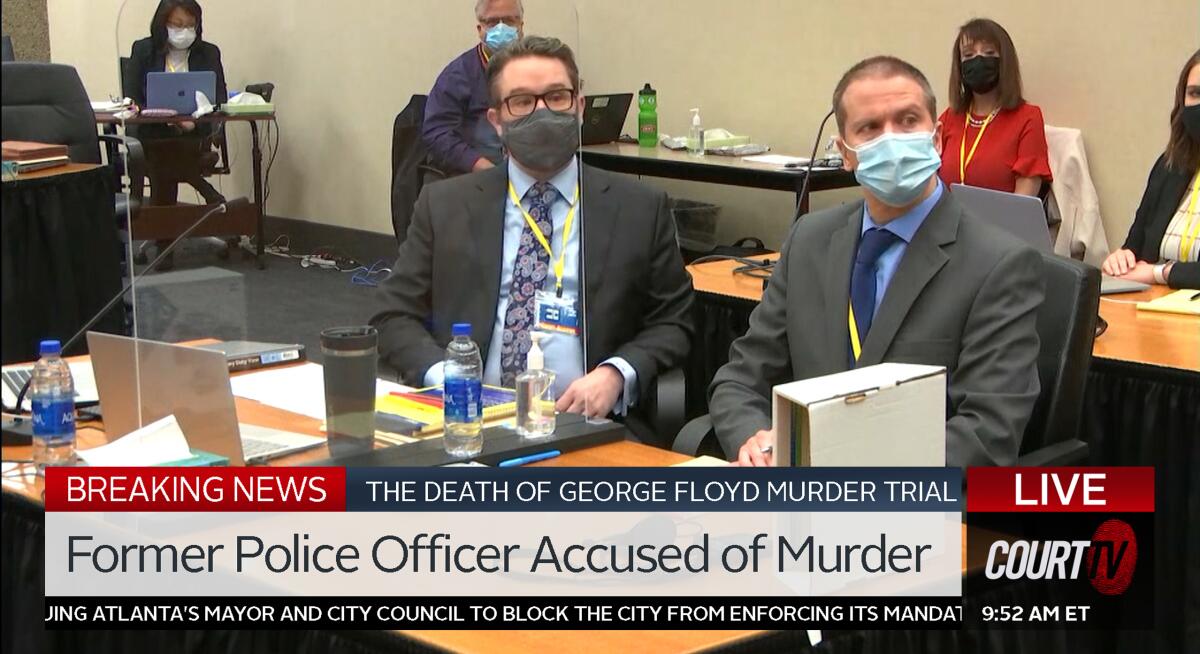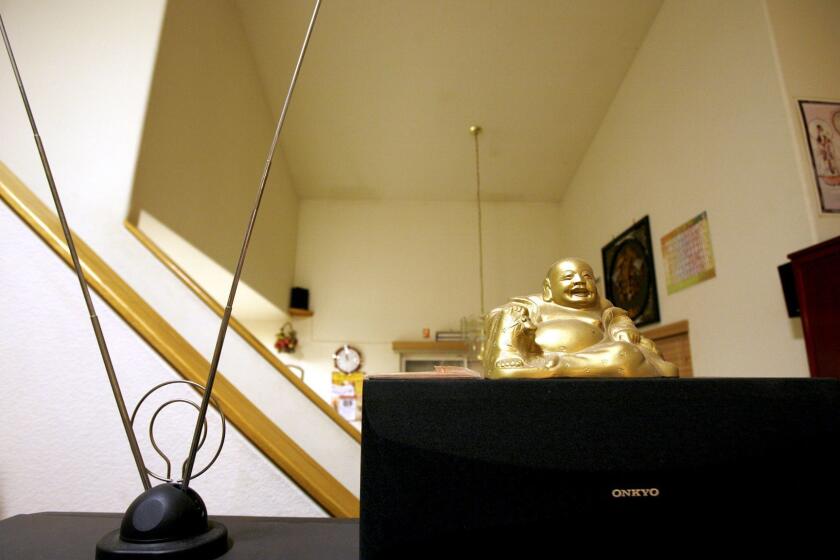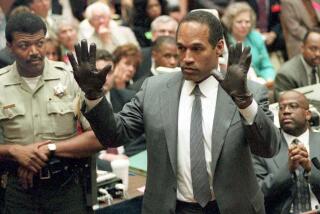Derek Chauvin trial brings Court TV to a new generation

- Share via
When cameras in courtrooms emerged in the 1990s, Court TV was the groundbreaking cable network that gave the viewers a front-row seat to the notorious trials of William Kennedy Smith, O.J. Simpson and the Menendez brothers.
But as courtroom coverage became a staple of cable news and true-crime programming, Court TV strayed from its mission and eventually receded from the media landscape under the ownership of WarnerMedia (then called Time Warner). The network became a reality-based entertainment channel and was renamed truTV.
In May 2019, Court TV was revived by Cincinnati-based E.W. Scripps as a new programming service, acquiring the iconic brand name and the original network’s library of past trial coverage.
Viewers are rediscovering the channel as the country focuses on the trial of Derek Chauvin, the former Minneapolis police officer charged with the May 2020 killing of George Floyd, which sparked a national uprising over police brutality and structural racism.
“Without a doubt this is the most important and high-profile trial that we’ve covered since the relaunch,” said Scott Tufts, senior vice president for Court TV. “It may go down as being one of the biggest and most important trials in U.S. history to air on television. This is going to be a really good opportunity for people to find us again.”
Atlanta-based Court TV is the only national broadcast outlet providing gavel-to-gavel coverage of Chauvin’s trial, the first time cameras have been allowed in a Minnesota courtroom. Unlike the cable version of the channel, people can watch for free on their TV through an antenna or livestreamed through a digital device.
The network has provided uninterrupted coverage of the case for three weeks before the trial began on Monday, including pretrial hearings and jury selection. Viewing for the total day is up 30% over that time, according to Nielsen data. Livestreaming has risen from 3 million minutes a week to 13.5 million, a jump of 346%.
Court TV is available to 112 million homes across the U.S. on digital sub-channels, the additional over-the-air stations broadcasters received when they converted to digital high-definition signals in 2009. (In Los Angeles, Court TV airs on 5.3, a sub-channel of Nexstar Media Group’s KTLA.) It’s also available on cable systems across the country where the stations have carriage agreements.
Karl Rudnick, a retired 69-year-old mathematician who lives in Solana Beach, Calif., recently bought a second home outside Minneapolis to be close to family members.
The channel also can be livestreamed for free through the Court TV website, a mobile app and on advertiser-supported streaming services such as Pluto TV and Roku.
The business plan for the new Court TV is what Tufts calls “platform-agnostic.” As the universe of cable and satellite diminishes with cord-cutting, Court TV is positioned to reach viewers in all of the ways they consume video.
“I have three children in their late 20s, and they watch on their phones and iPads,” said Tufts. “My mom, who is in her 70s, watches us on linear TV.”
E.W. Scripps is banking on more viewers turning to free over-the-air antennas to receive programming as the number of subscription streaming services proliferates and prices increase.
Recent Nielsen figures show that nearly 50 million American U.S. households — about 40% of homes with TV — owned antennas in 2020, up from 29% in 2019.
Court TV is sold to advertisers as part of a package of over-the-air networks, which include Bounce, which caters to Black viewers; Grit, which airs classic TV shows and western movies; Newsy, a news channel that targets millennials; and the recently acquired ION, which offers repeats of such popular dramas as “Law & Order.”
“They are building a hybrid through broadcast, cable and streaming to aggregate impressions for advertisers,” said Bill Hague, executive vice president of Magid, a media consulting firm. “The overall network strategy is interesting.”
Tufts said Scripps saw an opportunity in Court TV as cable news channels like CNN, which once feasted on high-profile court cases such as the Casey Anthony murder trial, shifted more to politics over the decade. The focus on Washington became even more intense once then-president Donald Trump proved to be a reliable ratings magnet for cable news.
The new Court TV looks a lot like the old one, with correspondents and anchors who have practiced law or hold law degrees. The bulk of the action comes from static camera shots in the courtroom and feeds of video evidence shown to the jury.
The analysis during the Chauvin trial, which has extended into prime time, deals exclusively with legal tactics, not the political or social aspects of the case. The channel gathers social media comments from viewers on what they have seen and presents them in the evening.
“It’s really in the tradition of what Court TV has always done,” Tufts said. “This gives us a chance in this really polarizing news climate to offer a product that is strictly based on facts and the law.”
More to Read
Inside the business of entertainment
The Wide Shot brings you news, analysis and insights on everything from streaming wars to production — and what it all means for the future.
You may occasionally receive promotional content from the Los Angeles Times.












